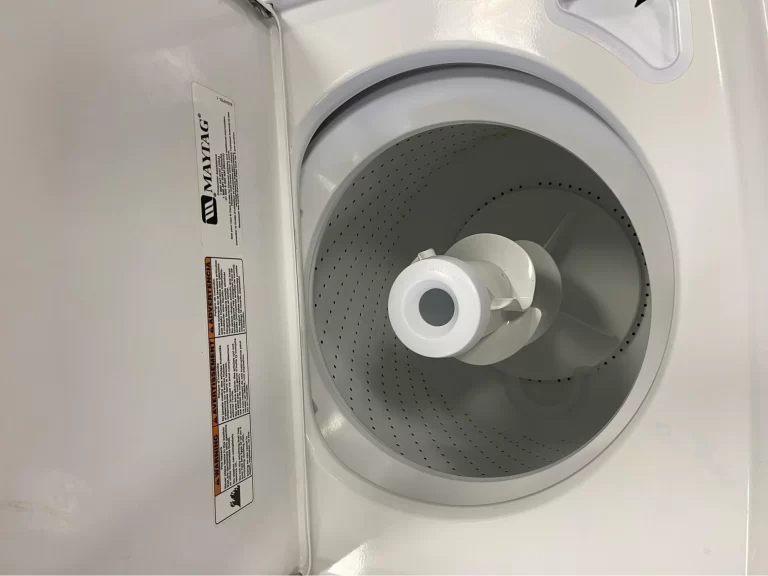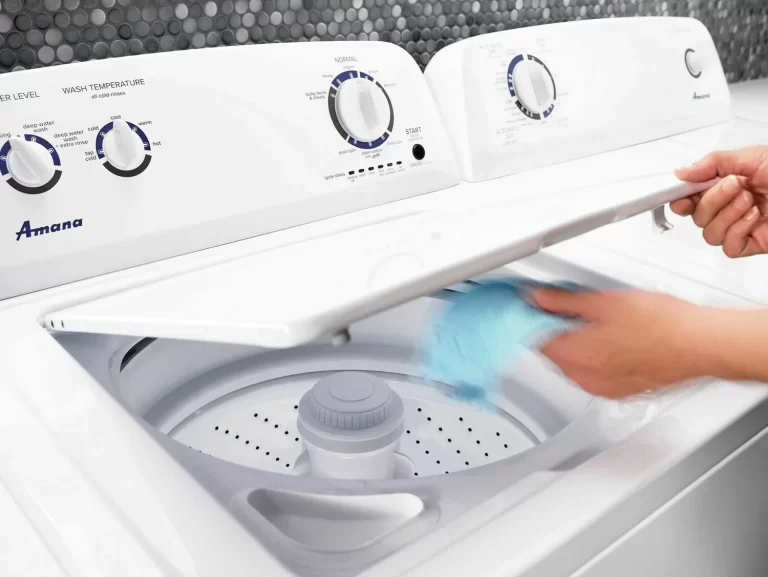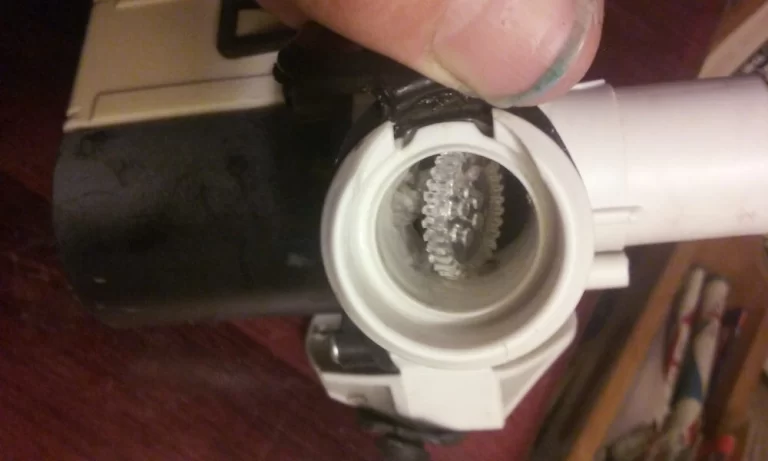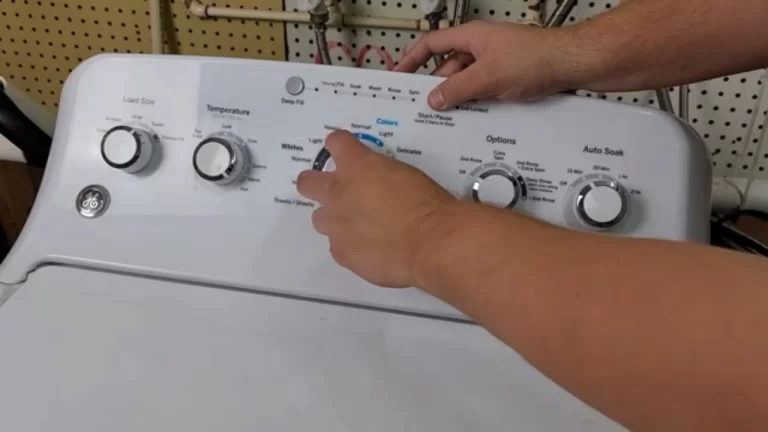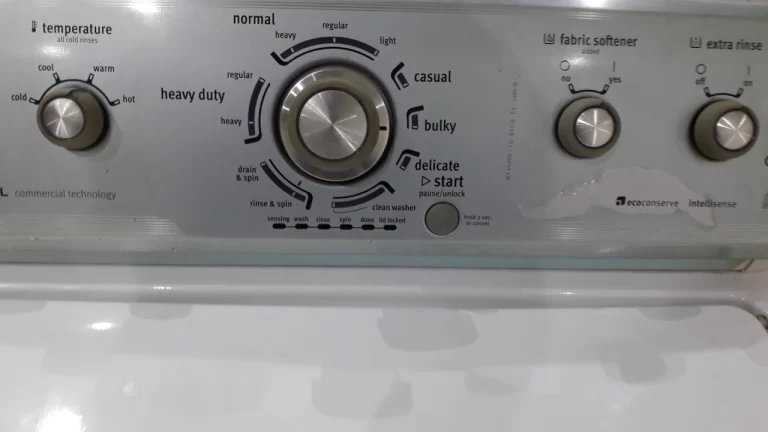Samsung washers, known for their durability and innovative features, have become a household name worldwide. However, like any appliance, they can occasionally encounter problems. These issues are typically indicated through specific Samsung Washer Error Codes. By understanding these codes, users can diagnose and often fix common issues themselves, saving both time and costs of professional repair.
Samsung washer error codes are system-generated signals indicating specific issues with your washing machine. These could include drainage problems, water supply issues, motor defects, sensor failures, and more. Each code corresponds to a particular problem and can help guide troubleshooting or professional repairs.
Quick Troubleshooting Guide
| Error Code | Explanation | Symptoms | Possible Fix |
| nd | Drainage Issue | Drum full of water and doesn’t drain | Check drain hose and pump for blockages |
| 1E or IE | Water Supply Issue | Drum doesn’t fill with water | Verify water supply valves, check hoses |
| 4E or 4C | Water Supply Error | Washer doesn’t fill with water or fills slowly | Check water pressure, clean water inlet filter |
| 3E | Motor Defect | Washer doesn’t spin or spins erratically | Reset washer, seek professional help if persists |
| 5E or 5C | Water Draining Error | Water remains in the drum, washer stops mid-cycle | Check drain hose, verify drain pump function |
| OE | Overflow Error | Excessive water in the drum | Check water level sensor, seek professional help |
| UE | Imbalance Error | Excessive vibration, washer stops mid-cycle | Redistribute laundry, check washer level |
| LE | Leakage Error | Signs of leakage from the unit | Check hose connections, inspect tub and seals |
| dE | Door Error | Washer won’t start despite closed door | Ensure door is securely latched, replace latch if needed |
| HE | Heating Error | Water doesn’t heat up, washer stops mid-cycle | Verify incoming water temperature, replace heating element |
| tE | Temperature Sensor Error | Inconsistent water temperature, washer stops | Reset washer, replace temperature sensor if persists |
| DC | Unbalanced Load Error | Excessive vibration, washer stops mid-cycle | Redistribute laundry, check washer level |
| LC or LC1 | Leakage Error | Water leakage from machine | Check all hoses, seek professional help if persists |
| SUD | Excessive Suds Error | Washer stops or takes longer to finish | Use high-efficiency (HE) detergent, run rinse and spin |
| FL | Door Lock Error | Washer door doesn’t lock or unlock | Ensure door is properly closed, replace lock if needed |
| FE | Fill Error | Excessive water in drum | Check water inlet valve, ensure water level sensor works |
| PF | Power Failure | Washer stops mid-cycle and fails to restart | Verify home’s electrical supply, restart washer cycle |
| bE | Button Error | Buttons don’t work or trigger wrong actions | Reset washer, service control panel if persists |
| E3 | Overload Error | Washer stops mid-cycle, drum struggles to turn | Reduce washer load, do not exceed washer’s capacity |
| LO | Door Unlock Error | Door remains locked after cycle | Unplug and try to open the door, replace door mechanism |
Understanding Samsung Washer Error Codes
Samsung Washer Error Codes are specific sequences of characters displayed on your washer’s digital screen when the machine encounters a problem or malfunction. These codes are programmed in the system to help identify the nature of the issue, enabling a more effective and efficient troubleshooting process.
Common Samsung Washer Error Codes and their Meanings
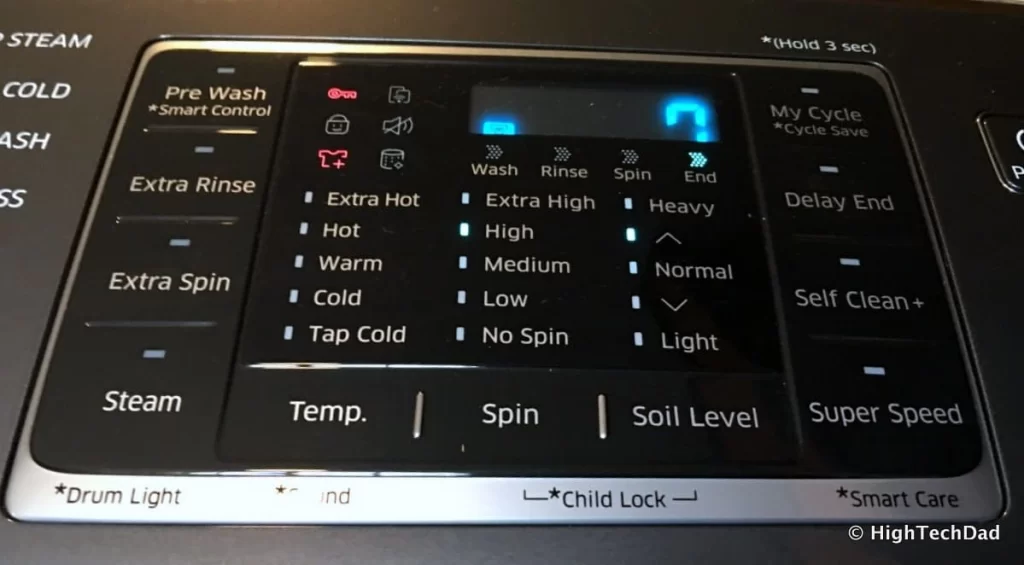
Let’s delve into some common Samsung Washer Error Codes, their meanings, and steps to diagnose and troubleshoot them:
1. ‘1E or IE’ – Water Supply Issue
Issue: This code signifies that the washer is not filling with water as it should.
Symptoms: Despite attempts to start the wash cycle, the drum of the washer doesn’t fill with water.
Fixes:
- Verify that water supply valves are open.
- Inspect the water inlet hoses for kinks, leaks, or blockages and correct as necessary.
2. ‘4E or 4C’ – Water Supply Error
Issue: Like the 1E or IE code, this code also indicates a water supply problem.
Symptoms: The washer doesn’t fill with water or takes longer than normal to fill.
Fixes:
- Ensure that water pressure is adequate in your home.
- Check the water inlet filter for any blockages and clean it if necessary.
3. ‘3E’ – Motor Defect
Issue: This code indicates a motor problem, which may affect the washer’s ability to spin.
Symptoms: The washer doesn’t spin or spins erratically.
Fixes:
- Reset the washer by unplugging it, waiting a few minutes, and plugging it back in.
- If the problem persists, contact a professional as the motor may require repair or replacement.
4. ‘5E or 5C’ – Water Draining Error
Issue: This error code signifies an issue with the washer’s draining system.
Symptoms: Water remains in the drum at the end of a cycle, and the washer may stop mid-cycle.
Fixes:
- Check the drain hose for any blockages and correct as necessary.
- Verify that the drain pump is working correctly.
5. ‘OE’ – Overflow Error
Issue: This code indicates that the washer is overfilled with water due to a faulty water level sensor.
Symptoms: Excessive water in the drum, which may overflow.
Fixes:
- Check the water level sensor for any issues.
- Consult a professional as this problem may require replacement of parts.
6. ‘UE’ – Imbalance Error
Issue: This error code appears when the load of laundry is imbalanced.
Symptoms: The washer vibrates excessively or stops mid-cycle.
Fixes:
- Open the washer and redistribute the laundry evenly in the drum.
- Run a spin-only cycle to correct the issue.
7. ‘LE’ – Leakage Error
Issue: This code indicates a potential leak in the washer.
Symptoms: Water under the washer or visible signs of leakage from the unit.
Fixes:
- Check all hose connections for any signs of leakage.
- Inspect the washer’s tub and seals for damage.
8. ‘dE’ – Door Error
Issue: This error code appears when the washer’s door is not closed properly.
Symptoms: The washer won’t start, and the door may appear closed even when it’s not.
Fixes:
- Close the door properly ensuring it is securely latched.
- If the error persists, the door latch may need to be replaced.
9. ‘HE’ – Heating Error
Issue: This error code signals a problem with the washer’s heating element.
Symptoms: The water in the washer doesn’t heat up, or the washer stops mid-cycle.
Fixes:
- Verify that the water entering the washer is at the correct temperature.
- If the problem continues, professional service may be required to replace the heating element.
10. ‘tE’ – Temperature Sensor Error
Issue: This code indicates an issue with the washer’s temperature sensor.
Symptoms: Inconsistent water temperature, or the washer stops during a cycle.
Fixes:
- Reset the washer by unplugging it for a few minutes and then plugging it back in.
- If the error persists, a professional might be needed to replace the temperature sensor.
11. ‘DC’ – Unbalanced Load Error
Issue: This error signifies that the load in the washer is unbalanced, similar to the UE code.
Symptoms: Excessive vibration during the spin cycle or the washer stopping mid-cycle.
Fixes:
- Try redistributing the laundry in the drum and then start the spin cycle again.
- Check if the washer is level on the ground. If not, adjust its feet.
12. ‘LC or LC1’ – Leakage Error
Issue: This code indicates a water leak from the washing machine.
Symptoms: Water is found under the machine or around it.
Fixes:
- Check all hoses for leaks and correct as necessary.
- If no leaks are found, the water leakage sensor might be triggered and a professional technician might be required to resolve the issue.
13. ‘SUD’ – Excessive Suds Error
Issue: This error code signifies that there are too many suds in the washer.
Symptoms: Washer stops mid-cycle or takes longer to finish.
Fixes:
- Use high-efficiency (HE) detergent and reduce the amount used.
- Run a rinse and spin cycle to remove excess suds.
14. ‘FL’ – Door Lock Error
Issue: This code indicates a problem with the door locking mechanism.
Symptoms: The washer door doesn’t lock or unlock.
Fixes:
- Ensure the door is properly closed.
- If the door doesn’t lock or unlock, a professional might be needed to replace the lock mechanism.
15. ‘FE’ – Fill Error
Issue: This code signifies that the washer is overfilled with water.
Symptoms: Excessive water in the drum which may even overflow.
Fixes:
- Check the water inlet valve for malfunctioning and replace it if necessary.
- Ensure the water level sensor is working properly.
16. ‘PF’ – Power Failure
Issue: This code appears when a power failure occurs during a wash cycle.
Symptoms: The washer stops mid-cycle and fails to restart.
Fixes:
- Verify your home’s electrical supply and circuit breaker.
- Restart the washer cycle.
17. ‘bE’ – Button Error
Issue: This error indicates a problem with the buttons on the control panel.
Symptoms: One or more buttons don’t work, or they trigger the wrong actions.
Fixes:
- Try resetting the washer by unplugging it for a few minutes and plugging it back in.
- If the issue continues, the control panel may need professional service.
18. ‘E3’ – Overload Error
Issue: This code signifies that the washer is overloaded.
Symptoms: The washer stops mid-cycle, or the drum struggles to turn.
Fixes:
- Remove some items from the washer to reduce the load and then try again.
- Make sure to not exceed the washer’s capacity in future cycles.
19. ‘LO’ – Door Unlock Error
Issue: This code appears when the washer’s door fails to unlock.
Symptoms: The washer finishes its cycle, but the door remains locked.
Fixes:
- Unplug the washer for a few minutes and then try to open the door.
- If the door remains locked, a professional might be needed to repair the door mechanism.
20. ‘AC6’ – Communication Error
Issue: This code appears when there’s a communication issue between the main control board and the inverter control board in the washer.
Symptoms: The washer may stop mid-cycle, fail to start, or exhibit erratic behavior.
Fixes:
- Reset the washer by unplugging it for a few minutes and then plugging it back in.
- If the issue continues, professional service may be required as the main control board, or the inverter control board may need to be repaired or replaced.
Preventing Samsung Washer Errors
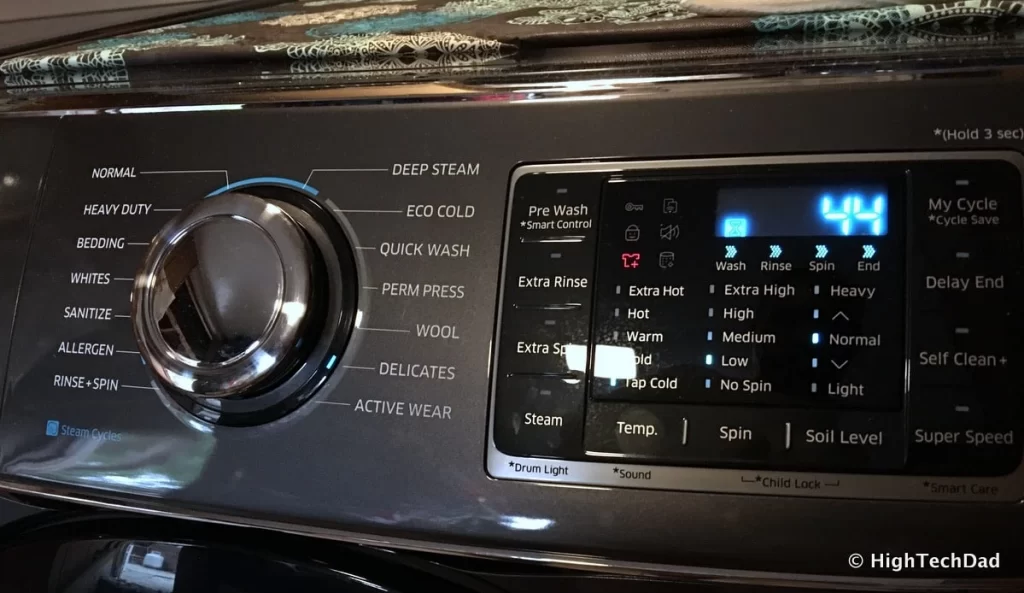
Preventing washer errors begins with proper use and regular maintenance. Here are some general guidelines to help prevent common errors:
- Use the right detergent: Always use high-efficiency (HE) detergent in the recommended amounts. Overuse of detergent can lead to ‘SUD’ errors.
- Load correctly: Overloading can strain the motor and cause imbalance errors. Ensure laundry is evenly distributed in the drum.
- Keep it clean: Regularly clean the washer drum, detergent dispenser, and any accessible filters to prevent clogs and improve performance.
- Check hoses regularly: Inspect the water supply and drain hoses for wear and tear. Replace them if necessary to avoid leaks or clogs.
- Level your washer: Make sure your washer is level. An unbalanced washer can vibrate excessively and cause ‘UE’ or ‘DC’ errors.
When to Seek Professional Help
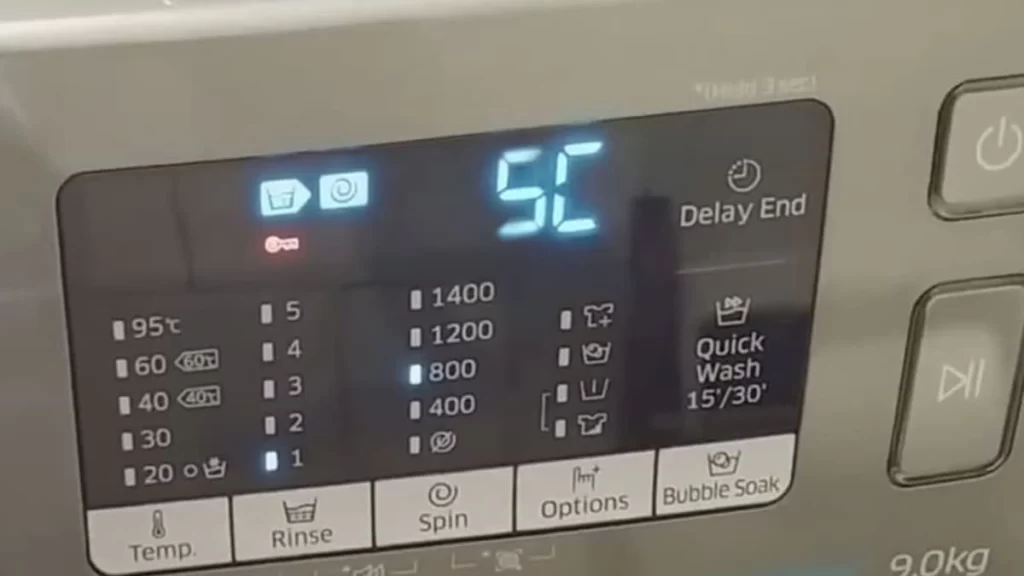
While many error codes can be resolved with simple fixes, some situations require professional assistance:
Persistent Errors: If an error code reappears after you’ve attempted a fix, it may indicate a more serious underlying issue.
Motor or Electrical Issues: Errors relating to the washer’s motor or control board, such as ‘3E’ or ‘AC6’, typically require a technician’s expertise.
Leaks and Overflows: If you can’t find the source of a leak (signified by ‘LC’ or ‘LE’ codes) or if the washer overflows (‘OE’ code), professional help is advisable.
Locking Mechanism Failure: If your washer’s door won’t lock or unlock (‘FL’ or ‘LO’ codes), a professional may need to repair or replace the locking mechanism.
Temperature and Heating Errors: Errors like ‘tE’ and ‘HE’ might mean that a sensor or the heating element needs replacement, which is a job for a professional.
FAQs
What should I do when an error code appears on my Samsung washing machine?
First, try resetting the washing machine by unplugging it and plugging it back after a few minutes. This may clear some error codes. If the error code persists, refer to your user manual or search for the error code online to understand its meaning and potential fixes. If the issue is complex, you may need to contact a professional for assistance.
Are all Samsung washer error codes fixable at home, or do I need a professional?
Some error codes indicate simple issues that can often be fixed by the homeowner, like checking for a blocked drain hose, redistributing an unbalanced load, or checking the water supply. However, other error codes might indicate more complex issues like motor defects or sensor failures, which may require professional assistance.
Can repeated occurrence of certain error codes signify a larger problem with my Samsung washer?
Yes, repeated occurrence of certain error codes could signify a larger underlying issue with your washer. For example, if you’re frequently getting drainage error codes, there might be a more serious problem with the washer’s pump system. It’s recommended to consult with a professional if you’re seeing the same error codes repeatedly.
Are Samsung washer error codes model-specific, or are they standard across all models?
Many error codes are standard across different Samsung washer models because they often relate to common components and systems, like water supply, drainage, temperature control, etc. However, some high-end models with additional features might have unique error codes. Always refer to your specific model’s user manual for the most accurate information.
How can I prevent some common Samsung washer errors from occurring?
Regular maintenance and proper use can help prevent many common washer errors. For example, clean the washer regularly, avoid overloading it, use the right amount of appropriate detergent, ensure the washer is level, and regularly inspect and clean drain and fill hoses. These steps can help maintain the performance and longevity of your Samsung washer.
Conclusion
Understanding Samsung Washer Error Codes is crucial in maintaining your washer’s optimal performance, preventing potential damage, and saving on repair costs. By being proactive and attentive to your washer’s needs, you can extend its lifespan and get the best out of this essential household appliance.

